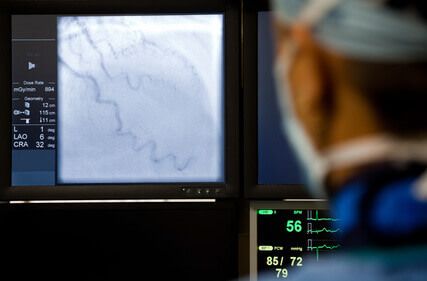Radial wall strain (RWS) has been recently linked with plaque vulnerability and has been identified as a predictor of lesion progression and clinical outcomes. However, RWS should be assessed together with physiological indices and plaque characteristics.

The aim of this post hoc analysis of the CCTA-FFR registry was to look into the link between RWS and FFR, as well as high-risk plaque (HRP), and clinical outcomes in patients with coronary artery disease (CAD).
Primary end point was defined as target vessel failure (TVF), which included a combination of cardiac death, TV acute MI or TV ischemia driven revascularization.
484 vessels from 351 patients were included; mean age 66, mostly men. Mean stenosis diameter was 40%, and 42% of lesions were on the anterior descending. Mean FFR and maximum RWS were 0.89 and 11%, respectively. The most common clinical presentation was stable CAD, present in 82% of cases, while only 17% presented acute MI.
RWS increase was associated with higher risk of FFR ≤ 0.88 and HRP, which was consistent even after adjusting for angiographic and clinical characteristics (P < 0.05). Primary end point resulted in the correlation between increased RWS and higher risk of TVF (HR: 1.23 [CI 95%: 1.03-1.47]; P = 0.022), with optimal cutoff value of 14.25%. Maximum RWS >14% resulted a predictor of TVF even after adjusting for FFR or HRP, and showed a prognostic effect on TVF.
Conclusion
Maximum RWS values are associated with coronary physiology and plaque morphology, and also showed independent prognostic value. The clinical use of maximum RWS should be considered an additional tool for CAD disease diagnosis and prognosis.

Dr. Andrés Rodríguez.
Member of the Editorial Board of SOLACI.org.
Original Title: Relationship of Coronary Angiography-Derived Radial Wall Strain With Functional Significance, Plaque Morphology, and Clinical Outcomes.
Reference: Seokhun Yang, MD et al J Am Coll Cardiol Intv 2024;17:46–56.
Subscribe to our weekly newsletter
Get the latest scientific articles on interventional cardiology





